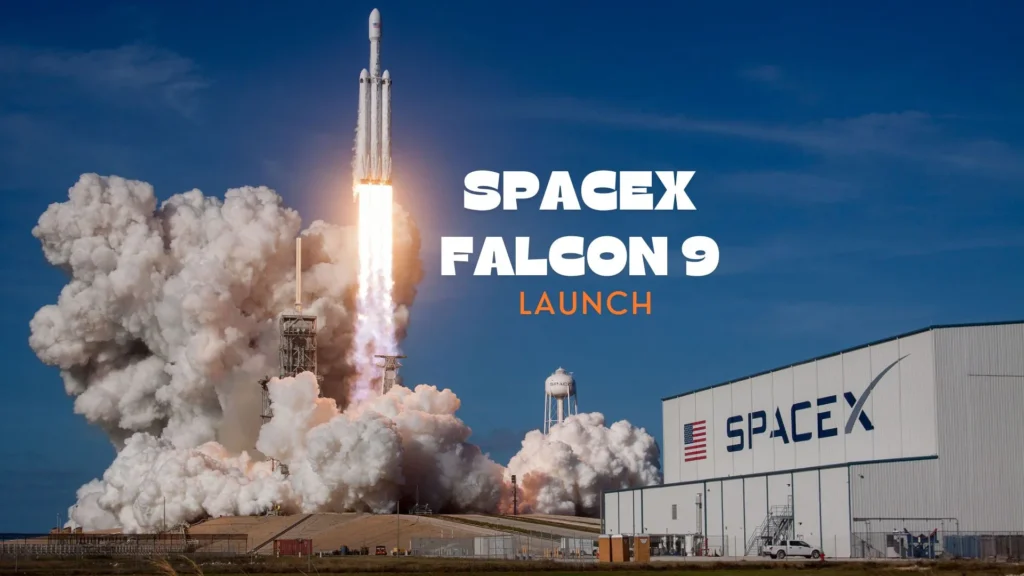SpaceX Falcon 9 Launch
Starlink Mission from NASA’s Kennedy Space Center On Wednesday, a historic event took place at NASA’s Kennedy Space Center as SpaceX’s Falcon 9 rocket successfully launched the Starlink mission. This launch marked another significant milestone for SpaceX, as they continue to revolutionize the space industry with their innovative technology and ambitious goals.

The Falcon 9 Rocket: A Marvel of Engineering
The Falcon 9 rocket, developed and manufactured by SpaceX, is a remarkable feat of engineering. Standing at approximately 230 feet tall, the Falcon 9 is powered by nine Merlin engines that provide an impressive thrust of over 1.7 million pounds. This immense power allows the rocket to deliver payloads to orbit and even perform controlled landings for reusability, a key factor in SpaceX’s mission to reduce the cost of space travel.
For the Starlink mission, the Falcon 9 rocket was carrying a payload of 60 Starlink satellites. These satellites are part of SpaceX’s ambitious plan to create a global satellite network that will provide high-speed internet access to even the most remote corners of the world. Once deployed, these satellites will work together to create a mesh network, ensuring reliable and fast internet connectivity for users on the ground.
The Launch and Deployment
The Falcon 9 rocket ignited its engines, and with a thunderous roar, it lifted off from Launch Complex 39A at NASA’s Kennedy Space Center. As the rocket ascended into the sky, it left behind a trail of exhaust, marking its path through the atmosphere. The launch was a sight to behold, showcasing the power and precision of SpaceX’s technology.
Approximately nine minutes after liftoff, the first stage of the Falcon 9 rocket successfully landed on the “Of Course I Still Love You” droneship stationed in the Atlantic Ocean. This achievement is a testament to SpaceX’s commitment to reusability and its efforts to make space travel more sustainable.
Shortly after the first stage landing, the second stage of the Falcon 9 rocket continued its journey, carrying the payload of Starlink satellites. As the second stage reached the designated orbit, the satellites were deployed one by one, each finding its place in the vast expanse of space. This deployment process was meticulously planned and executed, ensuring that each satellite was released at the precise time and location to form the desired constellation.
Watch Falcon 9 launch 23 @Starlink satellites to orbit https://t.co/qxTwCA5an3
— SpaceX (@SpaceX) May 8, 2024
The Significance of the Starlink Mission
The Starlink mission holds immense significance for SpaceX and the future of global connectivity. With this ambitious project, SpaceX aims to bridge the digital divide by providing internet access to underserved communities around the world. This has the potential to revolutionize education, healthcare, and communication in areas where reliable internet access is currently limited or non-existent.
Furthermore, the success of the Starlink mission brings SpaceX one step closer to its long-term vision of establishing a self-sustaining colony on Mars. Reliable and high-speed internet connectivity will be crucial for future Mars missions, allowing astronauts to communicate with Earth and access vital information while exploring the red planet.
Looking Towards the Future
As SpaceX continues to push boundaries and achieve remarkable milestones, the future of space exploration and technology looks promising. With each successful launch, they are not only advancing their own goals but also inspiring a new generation of scientists, engineers, and dreamers.
SpaceX’s Falcon 9 rocket and the Starlink mission are just the beginning of a new era in space exploration and connectivity. With their innovative technology and unwavering determination, SpaceX is paving the way for a future where space travel and global connectivity are more accessible than ever before.